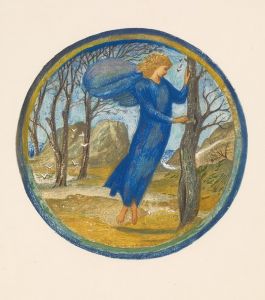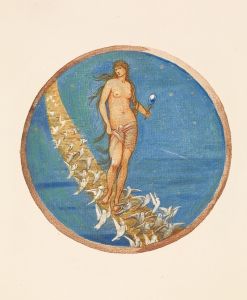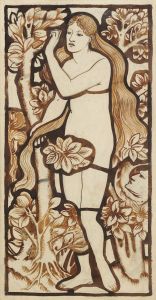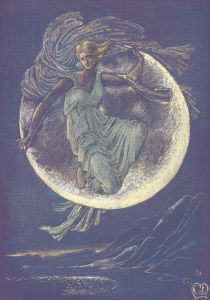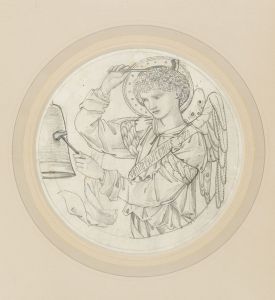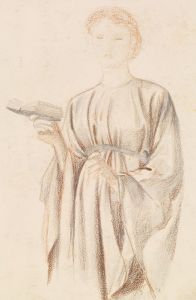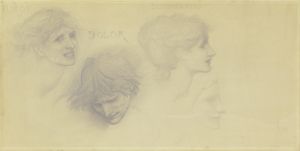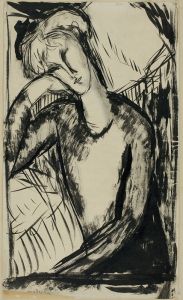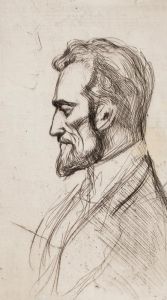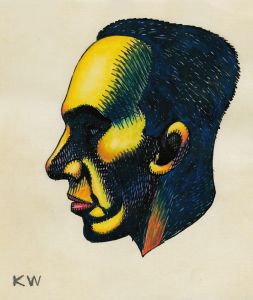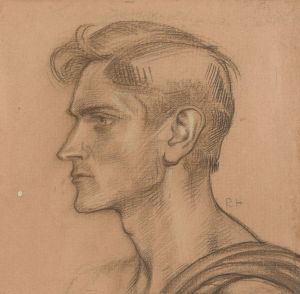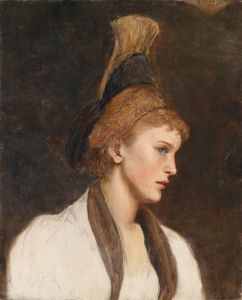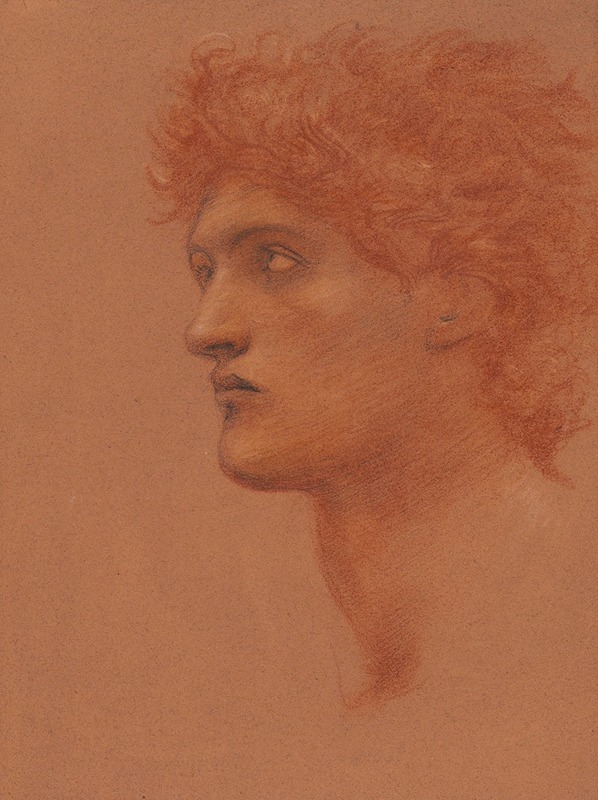
Study of a male head in profile, for Perseus in The Call of Perseus
A hand-painted replica of Sir Edward Coley Burne-Jones’s masterpiece Study of a male head in profile, for Perseus in The Call of Perseus, meticulously crafted by professional artists to capture the true essence of the original. Each piece is created with museum-quality canvas and rare mineral pigments, carefully painted by experienced artists with delicate brushstrokes and rich, layered colors to perfectly recreate the texture of the original artwork. Unlike machine-printed reproductions, this hand-painted version brings the painting to life, infused with the artist’s emotions and skill in every stroke. Whether for personal collection or home decoration, it instantly elevates the artistic atmosphere of any space.
"Study of a Male Head in Profile, for Perseus in The Call of Perseus" is a preparatory drawing by the British artist Sir Edward Coley Burne-Jones. This work is part of Burne-Jones's extensive exploration of the mythological theme of Perseus, which he pursued with great dedication during the late 19th century. Burne-Jones, a prominent figure in the Pre-Raphaelite Brotherhood, was known for his intricate and highly detailed approach to art, often drawing inspiration from classical mythology, medieval themes, and romantic literature.
The drawing serves as a study for one of the panels in the series "The Perseus Cycle," specifically for "The Call of Perseus." This series was commissioned by the renowned British art collector Arthur Balfour in 1875. The Perseus Cycle was intended to be a comprehensive visual narrative of the Greek hero Perseus, depicting various episodes from his legendary adventures. Burne-Jones's work on this series spanned several years, and it remains one of his most ambitious projects.
In "Study of a Male Head in Profile," Burne-Jones focuses on capturing the idealized features of Perseus, the hero of Greek mythology known for slaying the Gorgon Medusa. The drawing is characterized by its delicate lines and attention to anatomical detail, reflecting Burne-Jones's commitment to achieving a sense of classical beauty and harmony. The profile view allows the artist to emphasize the noble and heroic qualities of Perseus, aligning with the traditional portrayal of mythological heroes.
Burne-Jones's technique in this study demonstrates his skill in rendering the human form with precision and grace. The drawing likely served as a reference for the final painting, helping the artist to refine the composition and ensure consistency in the portrayal of Perseus throughout the series. Such preparatory studies were a common practice among artists of the time, allowing them to experiment with different poses and expressions before committing to the final work.
The Perseus Cycle, including "The Call of Perseus," was ultimately completed in the 1880s, although it faced several delays and challenges during its creation. The series is celebrated for its imaginative interpretation of the Perseus myth and its contribution to the revival of interest in classical themes during the Victorian era. Burne-Jones's work on the Perseus Cycle exemplifies his dedication to storytelling through art, as well as his ability to blend mythological subject matter with the aesthetic ideals of the Pre-Raphaelite movement.
Today, Burne-Jones's preparatory drawings, including "Study of a Male Head in Profile," are valued for their insight into the artist's creative process and his meticulous approach to composition and form. These studies offer a glimpse into the development of one of Burne-Jones's most significant works and highlight his role in the broader context of 19th-century British art.






